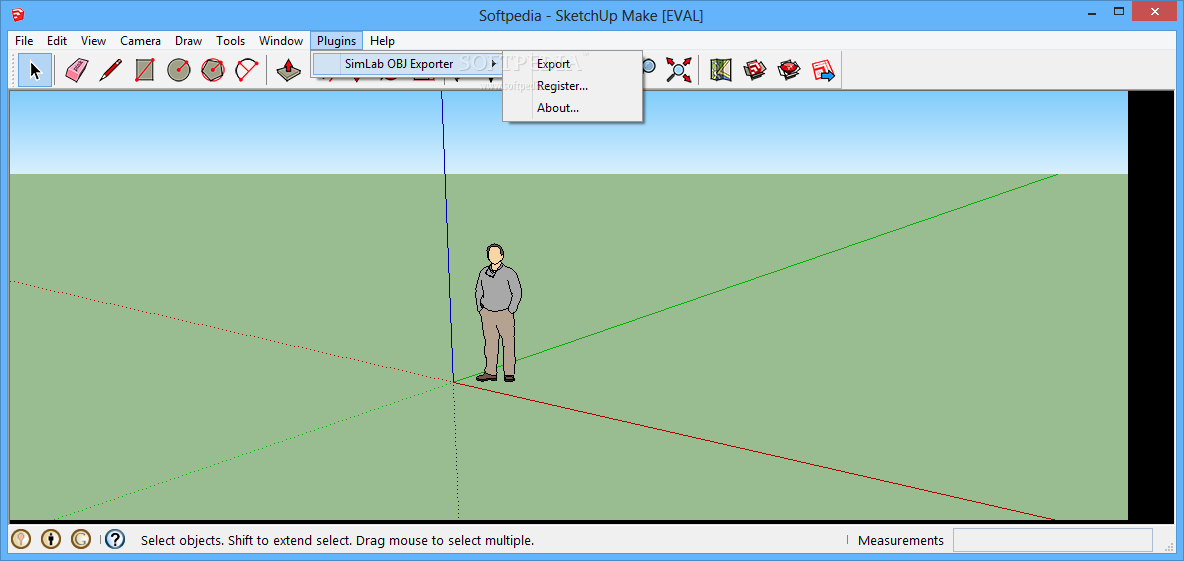
Once done, the model should have all the materials and textures added to it. Do the same for Materials by clicking on the “Extract Materials …” and creating a new folder called “materials”. Create a new folder in the pop-up window and rename it to “Textures”, and then click on “Select Folder”. To fix this, click on the “Extract Textures …” button in the inspector panel. Import OBJ files to SketchUp, with this fast and simple plugin. You can see that in the inspector menu it is detected that this is a SketchUp model, but all the materials for the individual components of this model are missing (labeled as none). Select the prefab of the model you have imported into your folder.
Sketchup textures not exporting with obj how to#
To fix this problem, we need to extract all the materials and textures from the prefab of the model so that Unity knows how to map them. If the above method does not work for your case, you can always simply add the skp model into the editor by dragging and dropping it into the folder structure. You may have noticed that the Building object we have imported looks rather dull and is missing lots of textures and materials. Selecting it will show a preview and settings for importing the model into the Scene in the Inspector Window. The asset for the Old Main 3D model itself will appear under the name “OldMain” as an icon with a little arrow on the right side. The two folders called “Materials” and “Textures” contain the components required to render the Old Main model. If you look in the Assets pane of the Project Window, you will see that several things have been added there in addition to the SampleScene. Unity will immediately recognize the new file in the Assets folder and import it. 4.2 Start Unity again and open the “MyFirstUnityProject” project.4.1 Copy the downloaded file OldMain.skp into the “Assets” folder under “…Documents\UnityProjects\MyFirstUnityProject” (adjust the location where you have saved your project if it's not in Documents).Before that, please make sure that neither Unity nor SketchUp are currently running! Then perform the following steps: So we are simply going to put the downloaded. Done Now, go back to Object mode and changes the 3d viewport to display textures.

Then in UV / Image editor, click Browse image (beside + icon) and select the texture of your model. You can see the views from Twinmotion, which do not accurately represent the mouldings at all.However, direct import of SketchUp. If you only applied texture to some component or group as a whole, and not to its faces, the exporter (and many renderers) may just ignore the texture. 1 Answer Sorted by: 0 First, you need go to edit mode and select all faces. In this specific project, we have complex profiles which create classic columns and crown moulds. Also, I've attached some views from ArchiCAD. Thank you very much! And thank you all for your opinion regarding this topic! Let me know here in the thread or via PM, I can get you a special link to securely send the file to us if needed. Therefore, in order to investigate further, I'm wondering if you could share the file with us for a closer look, along with the DirectLink settings you used for exporting? We think that this might be file-related.



I have asked our Twinmotion expert whether he had any missing object/element when transferring to Twinmotion, but unfortunately, we have never experienced such issue before. Thank you for sharing the issue here and I am sorry about the experience!


 0 kommentar(er)
0 kommentar(er)
